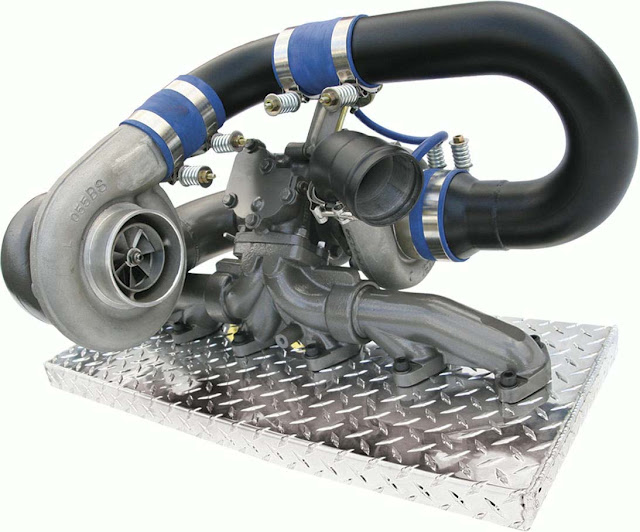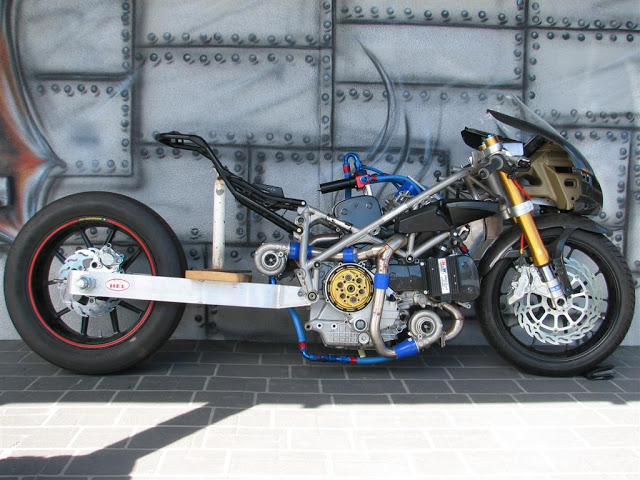Twin-turbo or biturbo refers to a turbocharged engine, in which two turbochargers compress the intake charge. More specifically called "parallel twin-turbos". Other kinds of turbocharging, include sequential turbocharging, and staged turbocharging. The latter is used in diesel automobile racing applications [SUBSCRIBE TO OUR DAILY EMAIL OR FOLLOW US ON FACEBOOK, TWITTER, YOUTUBE, and PINTEREST.]
Parallel twin-turbo
Paralleled twin-turbo refers to a turbocharger configuration in which two identical turbochargers function simultaneously, splitting the turbocharging duties equally. Each turbocharger is driven by half of the engine's spent exhaust energy. In most applications, the compressed air from both turbos is combined in a common intake manifold and sent to the individual cylinders. Usually each turbocharger is mounted to its own individual exhaust/turbo manifold, but on inline-type engines both turbochargers can be mounted to a single turbo manifold. Parallel twin turbos applied to V-shaped engines are usually mounted with one turbo assigned to each cylinder bank, providing packaging symmetry and simplifying plumbing over a single turbo setup. When used on inline engines parallel twin turbos are commonly applied with two smaller turbos, which can provide similar performance with less turbo lag than a single larger turbo. Some examples of parallel twin-turbo inline engines are Nissan's RB26DETT, BMW's N54 and Volvo's B6284T and B6294T. Some examples of V formation engines with parallel twin-turbos include Mitsubishi's 6A12TT and 6G72TT; Nissan's VG30DETT and VR38DETT; and Audi's 1997-2002 S4 (B5), 1997-2005 A6, and 2003-2004 RS6. While a parallel twin-turbo set-up theoretically has less turbo lag than a single turbocharger set up, this is not always the case due to many factors. Marginally reduced combined inertial resistance, simplified exhaust plumbing, and the simultaneous spooling of both turbos means that there can still be a noticeable bit of lag, especially in high-flow turbo/high boost applications. Some ways to counter this are to use a light pressure set up with smaller turbos, where the turbos are designed to output less boost but spool earlier. While this setup sacrifices some top end power, it still has less lag than a similar engine with a single turbo set up making the same power. Another system would be the use of variable geometry turbochargers. This system changes the angle of the guide vanes depending on the exhaust pressure, giving the system excellent power throughout the rev range. Once used mainly in turbocharged diesel engines, Chrysler was the first to use it in mass-production gasoline-powered vehicles with the Shelby CSX, debuted in 1989. It is possible to use parallel operation with more than two turbochargers. Two such examples are the Bugatti EB110 and Bugatti Veyron, both of which run four turbochargers in parallel. The EB110 runs 4 turbos on a 3.5 litre V12 engine, producing 542 hp (404 kW) at 8000 rpm, while the Veyron uses a 8.0 litre 16 cylinder engine to generate 1,001 PS (736 kW; 987 hp).
Article via wikipedia.org by +Melwin Daniel Nadar for +Grease n Gasoline


.jpg)








0 comments:
Post a Comment